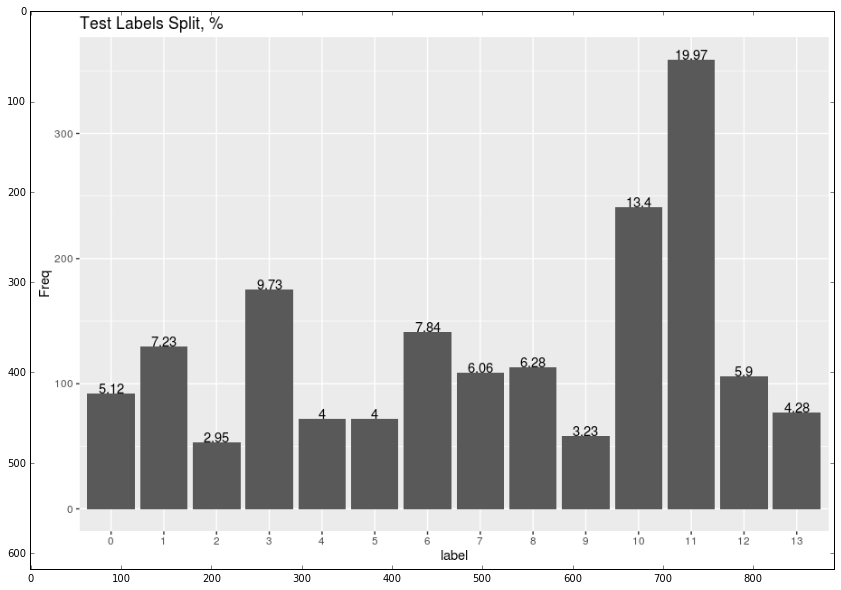Analysis of results and playing with featuremaps
In order to train model for activity classification I used pre-trained model, trained on ImageNet. The next step was to apply transfer learning. What is it? The main idea is to use weights that were trained on ImageNet and change them a bit to let them learn from other dataset. Important to mention that we have to change learning rate too. It should be smaller for layers that are the same with original model and be heiger for new layers. Next step is fine-tuning hyperparameters.
After fine-tuning various models and trying lots of learning rate policies, we got our best result with accuracy = 95% on test set, that is 10% of all MPII dataset. I have tried Adam, RMSProp and Momentum stochastic gradient optimization algorithms.
The best optimization algorithm was Adam, the best topology was GoogLeNet and my learning rate policy:
- base_lr: 0.0005
- lr_policy: “step”
- stepsize: 2000
All files for trainig models and my pre-trained weights you may find in the github repo. Don’t miss Part 1 - the main part about Classification and Detection algorithms using Convolutional Neural Networks.
You may find the plot of learning curves below:
%matplotlib inline
import matplotlib.pyplot as plt
import matplotlib.image as mpimg
plt.rcParams['figure.figsize'] = (18.0, 10.0)
learning_curves = mpimg.imread('/home/veronika/materials/cv/cv_organizer/googlenet/adam4/best.png')
plt.imshow(learning_curves)
<matplotlib.image.AxesImage at 0x7fc115efca90>
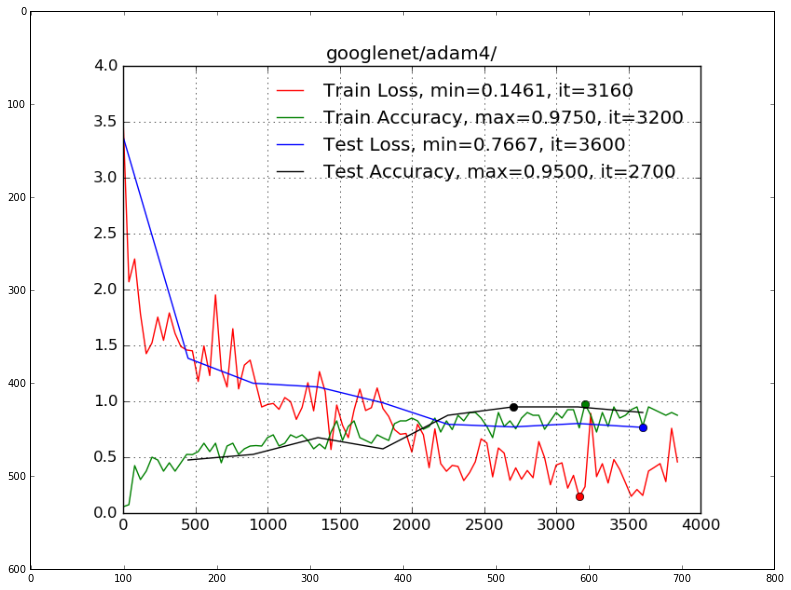
Using the following function we can get features from defined layer for each features.
import os
import sys
import numpy as np
import matplotlib.pyplot as plt
import caffe
import cv2
def probs_feats(img_path, deploy_path, weights_path, blob_name="pool5/7x7_s1"):
channels = 3
rows = 224
cols = 224
net = caffe.Net(deploy_path, weights_path, caffe.TEST)
net.blobs['data'].reshape(1, channels, rows, cols)
image = caffe.io.load_image(img_path)
image = cv2.resize(image, (224, 224))
image = image.swapaxes(0,2).swapaxes(1,2)
image = image.reshape(1, channels, rows, cols)
input_img = image.astype(float)
net.blobs["data"].data[...] = input_img
probs = net.forward()['prob'].flatten()
feats = net.blobs[blob_name].data
return list(probs), ([elem[0][0] for elem in feats[0].tolist()])
It was interesting for me to play with features values. I decided to plot covariance matrix for test set, that was sored by class. I applied the probs_feat function to all images from test set and using R ploted the matrixes. As it was expected features from almost last layes are pretty clustered!
class0_6 = mpimg.imread('/home/veronika/materials/cv/cv_organizer/presentation/0_6.png')
plt.title("Covariance matrix for first 6 classes")
plt.imshow(class0_6)
<matplotlib.image.AxesImage at 0x7fc1155c3290>
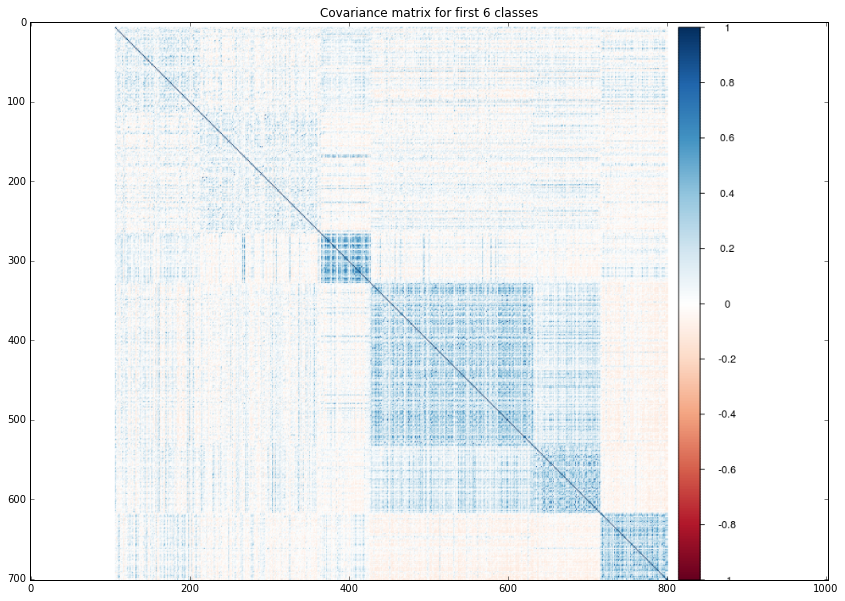
class7_11 = mpimg.imread('/home/veronika/materials/cv/cv_organizer/presentation/7_11.png')
plt.title("Covariance matrix for 7-11 classes")
plt.imshow(class7_11)
<matplotlib.image.AxesImage at 0x7fc115bb6610>
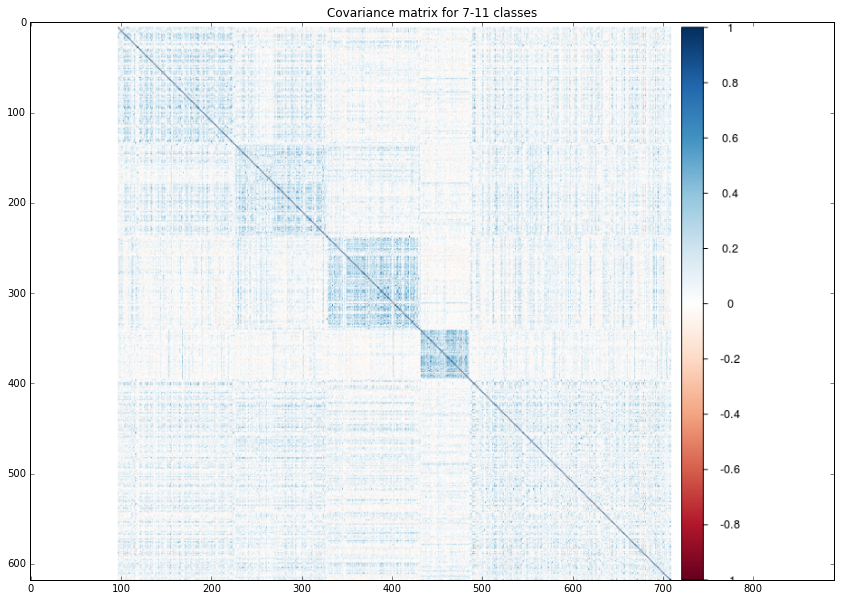
class12_14 = mpimg.imread('/home/veronika/materials/cv/cv_organizer/presentation/12_14.png')
plt.title("Covariance matrix for 12-14 classes")
plt.imshow(class12_14)
<matplotlib.image.AxesImage at 0x7fc115435990>
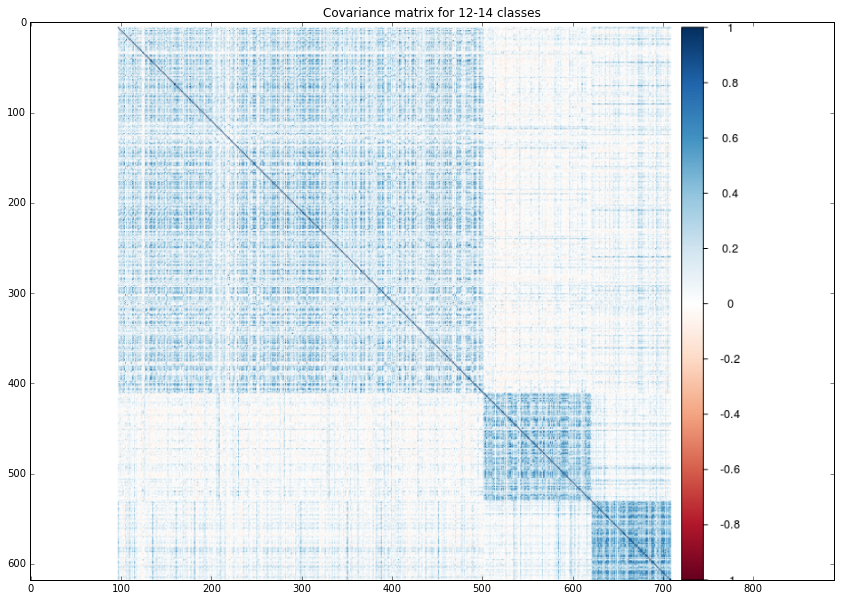
Using R I plotted confusion matrix of predicted and target values of test set.
confusion_m = mpimg.imread('/home/veronika/materials/cv/cv_organizer/presentation/confmatrix.png')
plt.imshow(confusion_m)
<matplotlib.image.AxesImage at 0x7fc115341290>
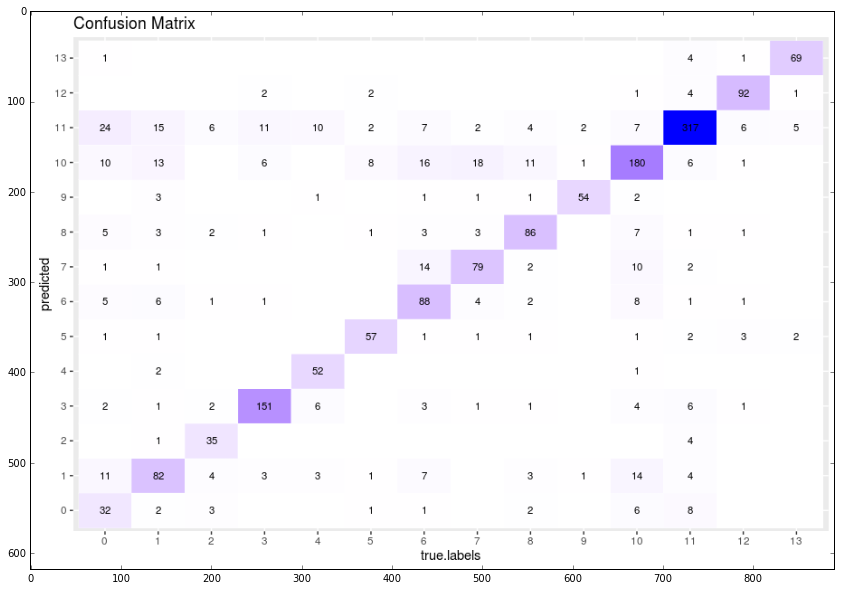
The last but not least fact is that in order to prevent overfitting all classes were splited into stritified folders (to save the distribution between classes in train and test sets) before training the model.
train_dist = mpimg.imread('/home/veronika/materials/cv/cv_organizer/presentation/train.png')
plt.imshow(train_dist)
<matplotlib.image.AxesImage at 0x7fc11578ccd0>
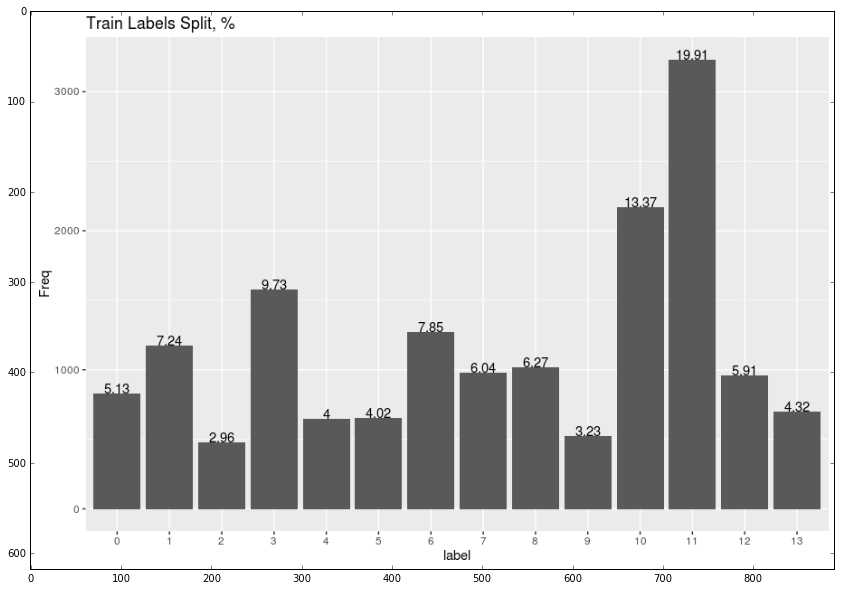
test_dist = mpimg.imread('/home/veronika/materials/cv/cv_organizer/presentation/test.png')
plt.imshow(test_dist)
<matplotlib.image.AxesImage at 0x7fc1154dc190>
